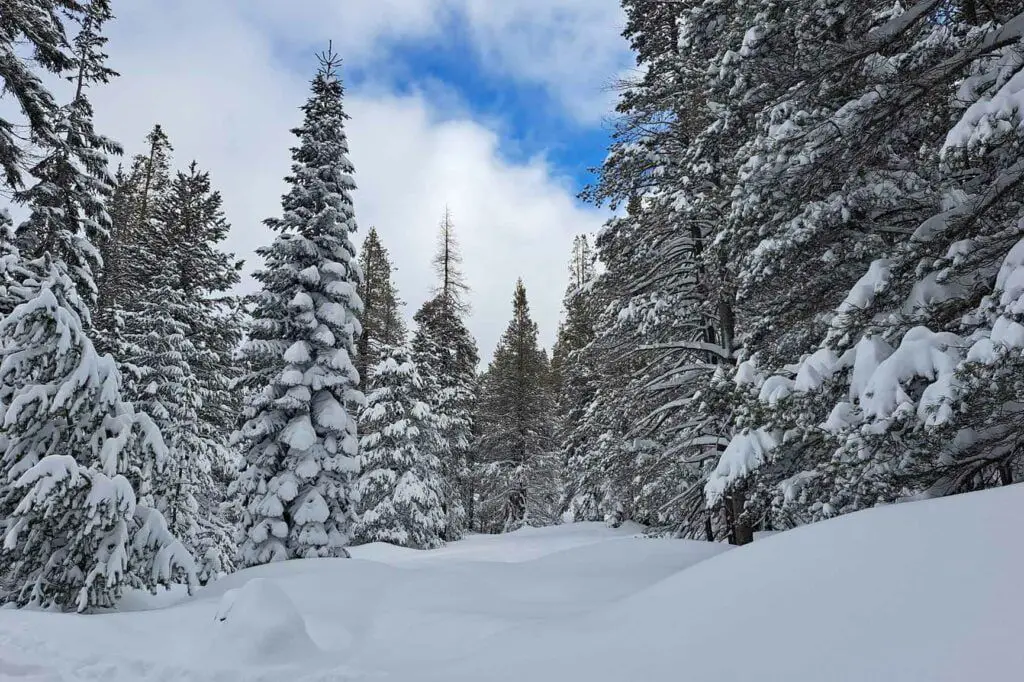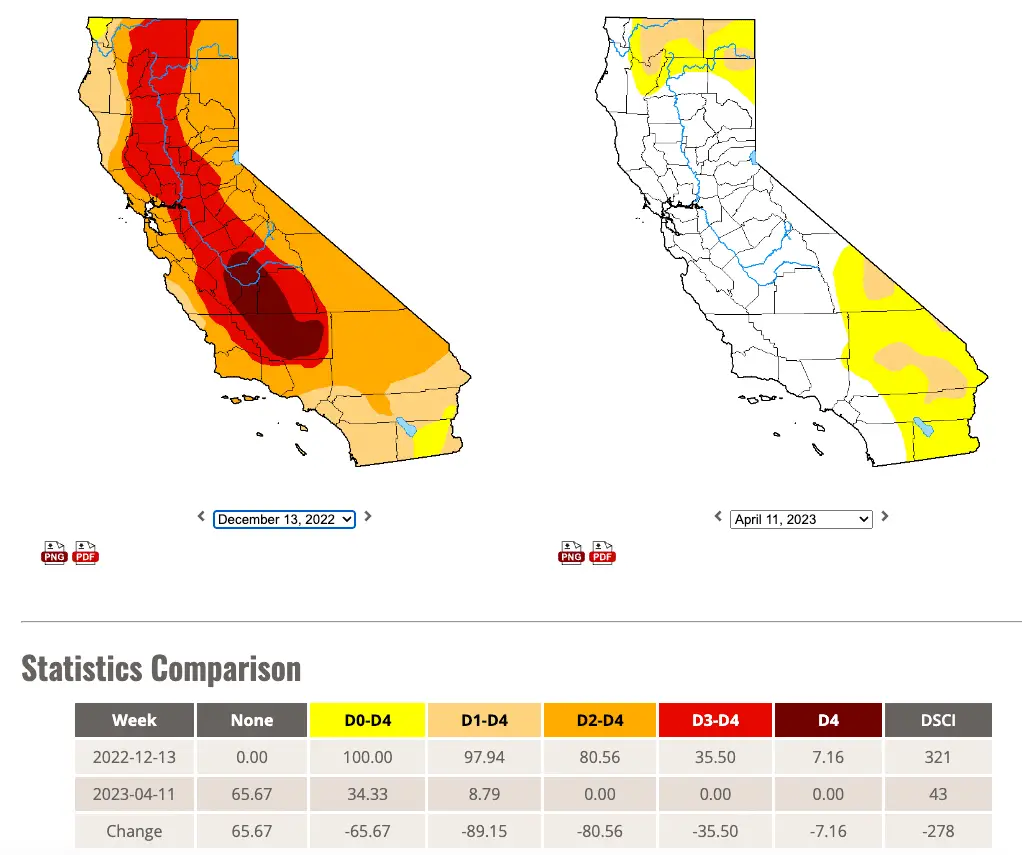The parade of atmospheric rivers has put a dent in the California drought, with less than nine percent of the state still officially in drought conditions. This is according to the University of Nebraska-Lincoln, which also found that the heavy winter rains also eliminated any severe drought in the state as of its April 11 Drought Monitor survey date.
While about a third of the state remains “abnormally dry,” that’s an improvement from the beginning of the water year (October 1), when nearly the entire state was in some form of drought. At that time, 88 percent of the state was in extreme or exceptional drought, the two highest drought classifications.

“Looking at the October through March period, NOAA NCEI’s latest climatological rankings are showing above-normal precipitation in the West Climate Region (California, Nevada) as well as in the Southwest Climate Region (Four Corners states) coming in at 9th wettest (+6.31-inch anomaly) and 18th wettest (+1.83-inch anomaly), respectively,” report authors David Simeral of Western Regional Climate Center and Tsegaye Tadesse of the National Drought Mitigation Center wrote in the April 11 weekly summary.
However, the rainfall is just part of the story. Overall, the area covered by drought has shrunk by about half, according to UNL data. Simeral and Tadesse noted that widespread larger-than-average snowpack across the West also triggered the change in classification across California and other drought-stricken states, including Nevada, Idaho, Montana, and Utah.
California Drought Status 2023
Below, we’ve shared a map from UNL comparing drought conditions from mid-December, just as the atmospheric rivers kicked into high gear, and April 11, the most recent update. The most significant changes can be seen across interior California and the Sacramento Valley, where most of this winter’s atmospheric rivers were focused.

Some dryness remains over southern California, mainly due to the effects of the Sierra Nevada mountain range. While coastal areas of Southern California received quite a bit of rain this winter, the moist air dries out as it is pushed over the mountains. However, this area traditionally sees its rains during the summer Monsoon season, which may help alleviate drought conditions further.
Lower Wildfire Risk
Another positive effect of the heavy winter rains is on the wildfire season. While the state has dried out considerably over the past month or so, that is normal — California’s rainy season typically ends in April. However, as evidenced by the so-called “super blooms” of wildflowers across the state — so significant they can be seen from space — there’s a lot of moisture left in the ground.
Researchers say fire risk will be lower initially, at least until June. If extreme heat holds off, too, that could keep fire risk low even longer. There may be good news: meteorologists expect average temperatures and precipitation over much of the West through early summer.

When Will the California Drought End?
While the three-year drought that began in 2020 is over, meteorologists and climatologists warn that the megadrought that has lasted much of the past two decades continues. While snowpack in some places is equivalent to two or three seasons worth of precipitation, it will take several wet years to completely recharge underground aquifers, which ran dry before the winter started.
However, Californians can breathe easier now and will deal with fewer water restrictions this summer than in the past. However, the state will first need to make it through the snowmelt season. While this snowmelt will fill the reservoirs, it also poses a considerable flood risk, the next weather hazard Californians will face.
One thing is sure, though. The California drought is waning, and the dire predictions of water shortages last fall will not become a reality. However, with El Niño on its way and climate change playing a factor, the Golden State may find itself bone dry again in short order..


